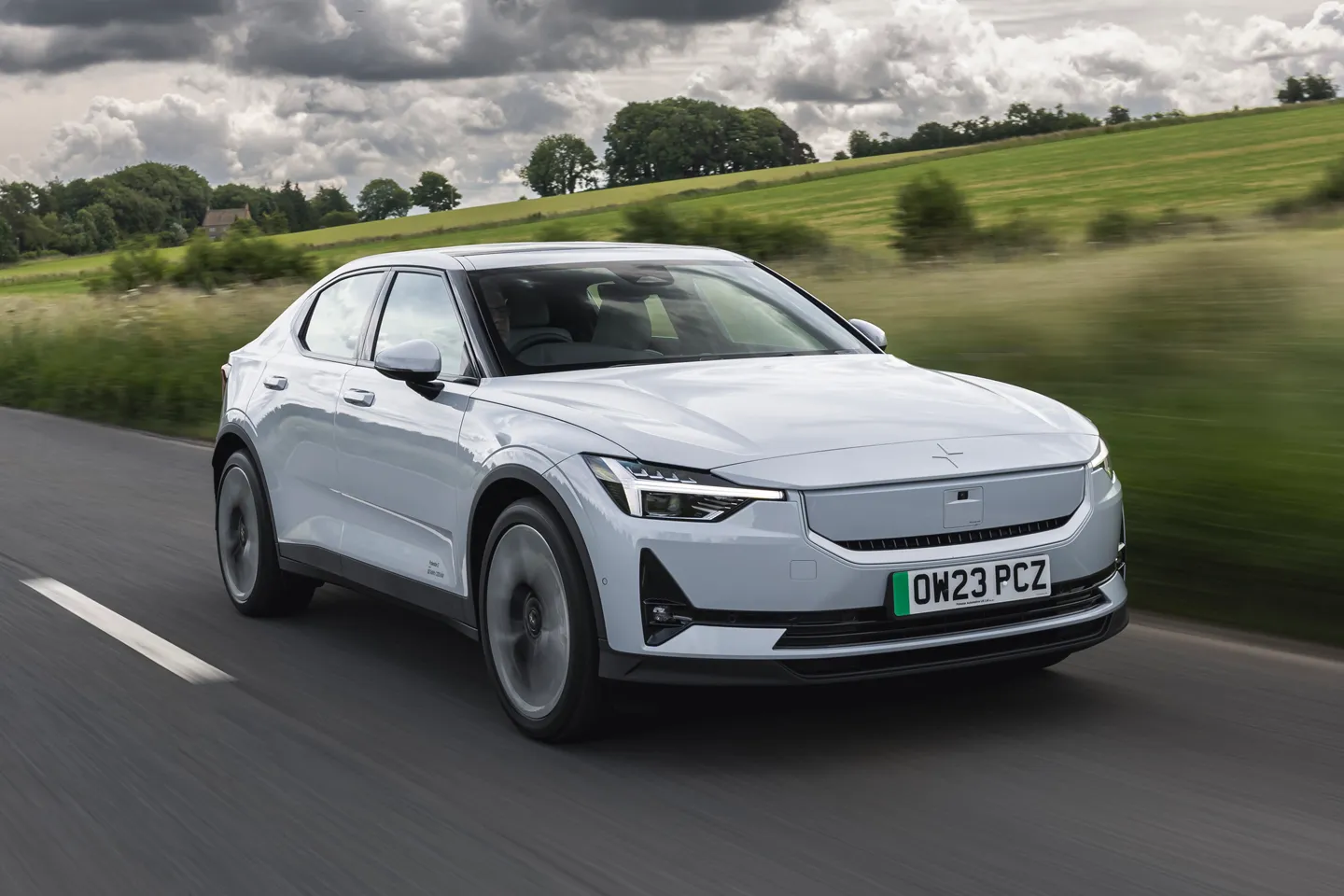The transition from front-wheel drive to rear-wheel drive without a major redesign is a rare occurrence in vehicles like the Chevy Malibu or Toyota Corolla. However, electric cars (EVs) are breaking this trend, as seen in the 2024 Polestar 2’s entry-level, single-motor model. This model seamlessly switches from front-drive to rear-drive, resulting in a significant improvement. To fully understand this change, we need to examine the modifications made to the 2024 model and compare it directly to the 2023 model.
When analyzing the 2022 model, we found that it weighed 4460 pounds, with 54.7 percent of the weight allocated to the front axle. The 2024 model, with a slightly heavier battery pack (79.0 kWh compared to 75.0 kWh), now weighs 4516 pounds. The weight distribution has shifted slightly towards the rear, with 51.1 percent on the rear axle and 48.8 percent on the front axle.
The key aspect of this transformation lies in the handling of the car. The previous front-wheel-drive model exhibited mild understeer at the limit on our skidpad. In contrast, the new rear-wheel-drive configuration turns the car into a nimble performer, with the tail easily swaying but remaining effortlessly controlled with the throttle. This represents a significant improvement in the dynamics of the rear-drive transformation.
Despite minor differences in tire specifications, the performance characteristics of the previous and current Polestar 2 models remain almost identical. Both models achieved a skidpad result of 0.88 g, and their braking distances from 70 mph to 0 were virtually indistinguishable (166 feet for the rear driver and 161 for the front driver). Additionally, both models consistently registered interior noise levels of 69 dB at 70 mph.
The latest Polestar 2 boasts a substantial increase in power, thanks to the upgraded battery pack. It surpasses the 2022 model in terms of acceleration, midrange passing times, and peak speed (130 mph versus 101 mph). It’s important to note that the improved balance at the limit is not solely due to the power increase but also the well-tuned chassis and optimal weight distribution.
Another notable development is the introduction of a single-motor, rear-wheel-drive model for the 2024 Volvo XC40 Recharge, which shares its powertrain with the Polestar 2. Interestingly, this shift does not generate the same level of dynamic excitement during limit handling.
Unlike traditional gas-powered vehicles, where transitioning from front to rear drive typically involves attaching a drive shaft to the rear axle, the Polestar 2’s rear motor placement does not have any adverse effects on packaging or efficiency.
In addition to the improved handling and performance, the Polestar 2’s move to rear-wheel drive also brings about a 7% increase in EPA combined efficiency (from 107 MPGe to 115 MPGe). The EPA range expands from 270 to 320 miles, primarily due to the larger battery capacity. During our highway test at 75 mph, the 2024 model achieves a mileage gain of 30 miles, totaling 250 miles. This represents an almost 10% increase in efficiency per kWh, from 2.9 to 3.2 miles. Importantly, there is no change in cargo capacity behind the back seats or in the frunk.
The decision to switch to rear-wheel drive for the Polestar 2 proves to be a strategic move, delivering improved handling and performance without sacrificing efficiency. This positive transformation may inspire other automakers to consider a similar shift to rear-wheel drive.

